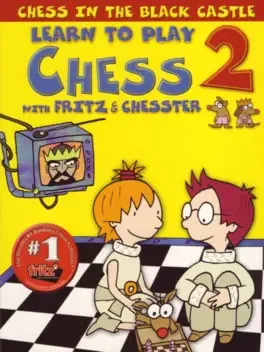Fritz 8
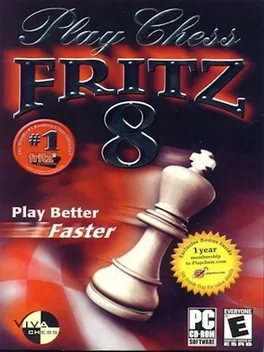
Buy
Could be interesting
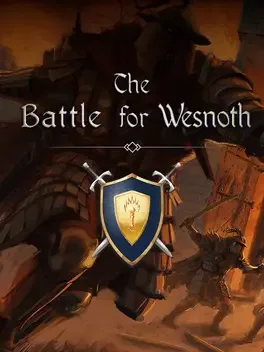
The Battle for Wesnoth is a turn-based tactical strategy game with a high fantasy theme. Build up a great army, gradually turning raw recruits into hardened veterans. In later games, recall your toughest warriors and form a deadly host whom none can stand against! Choose units from a large pool of specialists, and hand-pick a force with the right strengths to fight well on different terrains against all manner of opposition. Wesnoth has many different sagas waiting to be played. Fight to regain the throne of Wesnoth, of which you are the legitimate heir... step into the boots of a young officer sent to guard a not-so-sleepy frontier outpost... lead a brutal quest to unite the orcish tribes... vanquish a horde of undead warriors unleashed by a foul necromancer, who also happens to have taken your brother hostage... guide a band of elvish survivors in an epic quest to find a new home... get revenge on the orcs by using the foul art of necromancy... There are at least two hundred unit types, sixteen races, six major factions, and hundreds of years of history. The world of Wesnoth is absolutely huge and only limited by your creativity — make your own custom units, create your own maps, and write your own scenarios or even full-blown campaigns. You can also challenge up to eight friends—or strangers—and fight in epic multiplayer fantasy battles.
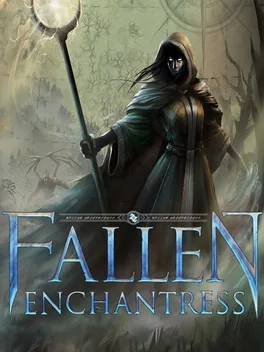
A World to Build… or Destroy. “A war is coming… a war between East and West - between Kingdoms and Empires, between man and Fallen. A future of blood and death, of chaos and destruction.” – the Oracle Ceresa.
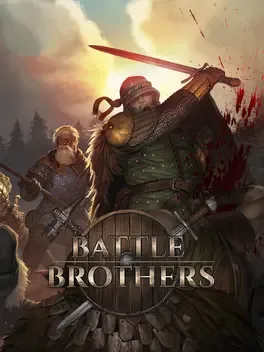
Battle Brothers is a turn based strategy RPG mix which has you leading a mercenary company in a gritty, low-power, medieval fantasy world. You decide where to go, whom to hire or to fight, what contracts to take and how to train and equip your men in a procedurally generated open world campaign. Do you have what it takes to lead them through bloody battles and to victory? The game consists of a strategic worldmap and a tactical combat layer. On the worldmap you can freely travel in order to take contracts that earn you good coin, find places worth looting, enemies worth pursuing or towns to resupply and hire men at. This is also where you manage, level up and equip your Battle Brothers. Once you engage a hostile party the game will switch to a tactical map where the actual fighting takes place as detailed turn based combat.
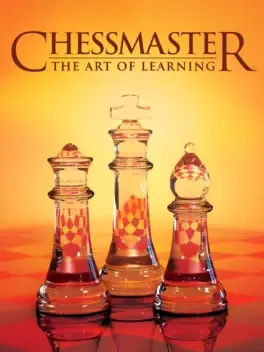
Chessmaster: The Art of Learning expands the scope of chess to include broader principles of learning. Josh Waitzkin's much-anticipated book The Art of Learning (Free Press) is designed to pave the road to successful long-term growth on and off the chessboard. The eight-time National Chess Champion and two-time martial arts World Champion puts users in his shoes in some of the most riveting and formative moments of his chess career, including the legendary climactic game from the book and film Searching for Bobby Fischer. Waitzkin then turns to the classics, introducing beginners to brilliant games from some of the most important players in the history of chess. In his most revealing commentary ever, Waitzkin not only teaches the beginning chess player the fundamentals of the game, but also humanizes the road to mastery. Never has chess been so exciting.

Here, order is maintained by the Church of Seiros, which hosts the prestigious Officer’s Academy within its headquarters. You are invited to teach one of its three mighty houses, each comprised of students brimming with personality and represented by a royal from one of three territories. As their professor, you must lead your students in their academic lives and in turn-based, tactical RPG battles wrought with strategic, new twists to overcome. Which house, and which path, will you choose?
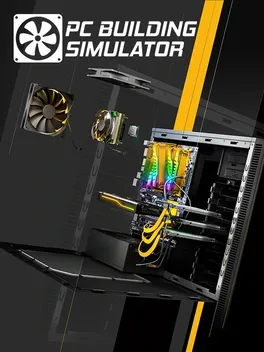
PC Building Simulator lets players get to grips and experiment with building their very own gaming PC, without the associated risks and costs. With tutorials to help master the basics and an array of accurate and lifelike components that function exactly as they would in real life.

Origin The original SARGON was written by Dan and Kathleen 'Kathe' Spracklen in a Z80-based computer called Wavemate Jupiter III[1] using assembly language through TDL Macro Assembler. The name was originally written entirely in capitals because early computer operating systems such as CP/M did not support lower-case file names. Introduction SARGON was introduced at the 1978 West Coast Computer Faire where it won the first computer chess tournament held strictly for microcomputers, with a score of 5-0.[2][3] This success encouraged the authors to seek financial income by selling the program directly to customers. Since magnetic media were not widely available at the time, the authors placed an advert in Byte Magazine and mailed $15 photocopied listings that would work in any Z80-based microcomputer.[1] Availability of the source code allowed porting to other machines. For example, the March–April 1979 issue of Recreational Computing describes a project that converted Sargon to an 8080 program by using macros. Later the Spracklens were contacted by Hayden Books and a book was published.[4] Commercialization through electronic media When magnetic media publishing became widely available, a Navy Petty Officer, Paul Lohnes, ported Sargon to the TRS-80, altering both graphics, input, and housekeeping routines leaving the Spracklen's chess-playing algorithm intact. Paul consulted with the Spracklens, both living in San Diego at the time, to make the TRS-80 version an instant success with the help of Hayden Book's newly established software division: Hayden Software. Paul was not involved in further refinements to the TRS-80 version due to his reassignment to sea duty shortly after signing the deal with Hayden Software. In the early 1980s SARGON CHESS was ported to several earlier microcomputers, i.e. NASCOM (by Bits & PCs, 1981), Exidy Sorcerer, Sharp MZ 80K,[5] and many others. A complete rewrite was necessary later for the Apple II port, made by Kathleen's brother Gary Shannon. Both were published by Hayden Software. Sequels The Spracklens made significant improvements on the original program[1] and released Sargon II. In 1978 it tied for third at the ninth North American Computer Chess Championship despite being seeded ninth of 12 entries. Sargon finished only behind Belle and Chess 4.7, and defeated AWIT—running on a $5 million Amdahl mainframe—amazing the audience.[6][3][1] That year they published a series of articles in BYTE on computer chess programming,[2][7] stating "we think it would be nice if not everyone had to reinvent the wheel".[6] Sargon II was ported to a variety of personal computers popular in the early 1980s.[8] The game engine featured multiple levels of lookahead to make it more accessible to beginning chess players. BYTE in 1980 estimated that Sargon II had a 1500 rating at the highest tournament-time difficulty level, and speculated that it was the best chess program on sale, including dedicated devices.[9] Sargon 2.5, sold as a ROM module for the Chafitz Modular Game System, was identical to Sargon II but incorporated pondering.[10] It received a 1641 rating at the Paul Masson tournament in June–July 1979, and 1736 at the San Jose City College Open in January 1980.[3] Sargon 3.0 finished in seventh place at the October 1979 North American Computer Chess Championship. The competition had improved, but 3.0 drew against Cray Blitz and easily defeated Mychess, its main microcomputer rival. In December 3.0 easily won the second microcomputer championship in London.[3] In 1980, the Spracklens' Reversi game finished in first place at a computer tournament at Northwestern University, and in 1981 it finished in third place at the Santa Cruz Open Othello Tournament.[11] Sargon III was a complete rewrite from scratch. Instead of an exchange evaluator, this version used a capture search algorithm. Also included was a chess opening repertoire. This third version was written originally for the 6502 assembler and was commercially published by Hayden Software in 1983. Apple contacted the Spracklens and, after a port for 68000 assembly, Sargon III was the first third-party executable software for the Macintosh.[1] After the demise of Hayden Software, later chess programs were also released under the name Sargon, including Sargon IV (Spinnaker Software), Sargon V (Activision) and a CD-i title simply named Sargon Chess. The Spracklens concurrently wrote the engines for the dedicated chess computers produced by Fidelity Electronics, which won the first four World Microcomputer Chess Championships.
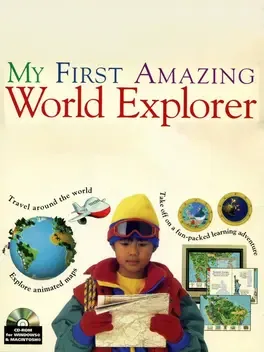
My First Amazing World Explorer is an educational travel game, developed and published by DK Multimedia. It functions both as a virtual atlas and as an exploration tool. The player travels the world, collecting stamps from every country visited, whilst learning about different nations.
Chess Player 2150 is a chess program which played well against the other chess programs of the day and won the 1989 British Open Personal Computer Chess Championship (according to a post in ST Report International Online Magazine, November 13, 1992, No.8.45). The author was not shy about his program's prowess. Built into the program is a pull-down menu, giving it's performance against Chessmaster 2000, Chessmaster 2100 and Colossus X, in 10 games apiece. The game was designed to improve as it played, so over time a game that played against good players would be much better than when it first began. Users have the option of saving, so that the gained intelligence isn't lost.
